

Published on November 14, 2023
“Surprises are part of the process and the joy of creating,” Microsoft Bing tells the artificial intelligence marketing novice. Maybe so—what passes for chatbot creativity is often a random result that until that moment has escaped consideration. Still, marketers and their clients prefer engagements with no surprises. The true benefit of generating images from text may prove to be how AI trains public relations professionals to front-load an assignment, so that important steps are not left to chance.
AI is a promising marketing technology that leaves no stone unturned. Computers are good at abstraction, at finding patterns in large amounts of data. Those relationships can help PR pros create content to execute a brand marketing vision that addresses the lifestyles and attitudes behind a product or service.
A chatbot can make fascinating connections, as when our social media marketing team asked DALL-E for architecture inspired by rappers. The bot promises to “create realistic images and art from a description in natural language.” In this case, DALL-E’s cross-cultural text and image training allow it to do much more than steal a beat from Drake’s Views album cover.
A more down-to-earth assignment can bring unsettling results. Ask DALL-E 2, the OpenAI text-to-image implementation of ChatGPT, to show what a chief executive looks like, then get ready for a series of synthetic power poses. Compare the results with a query for CEO profile photos on a search engine or stock image site; the unusual approaches stand out.


Breaking out of DALL-E’s pastiche of About Us headshots will mean getting specific about age, gender, race, location industry and agenda.
The natural approach to AI content creation for the industrious PR practitioner is to tell a story. A prompt like this can suggest a narrative to help the chatbot paint a more dynamic scene for a specific purpose:
I am illustrating a blog post on the chief executive’s role in ESG marketing. Generate an image that shows the CEO of an energy company meeting onsite with a delegation of stakeholders, trying to explain a company’s environmental, social and governance activities persuasively while taking their feedback.
While that’s a lot more to work with, image generators are still not intuitive, and the results will still have a long way to go. Patchwork faces and nonsense text blocks are par for the course in DALL-E 2.
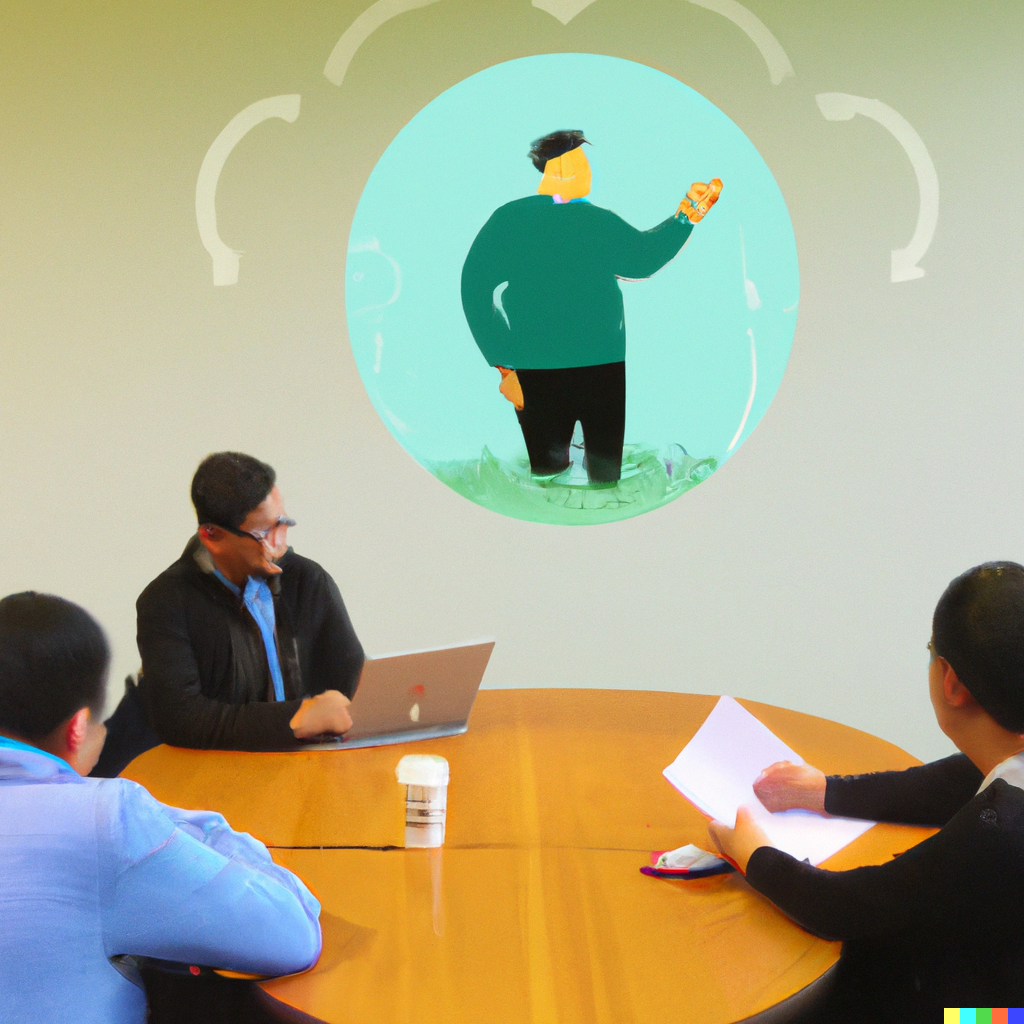
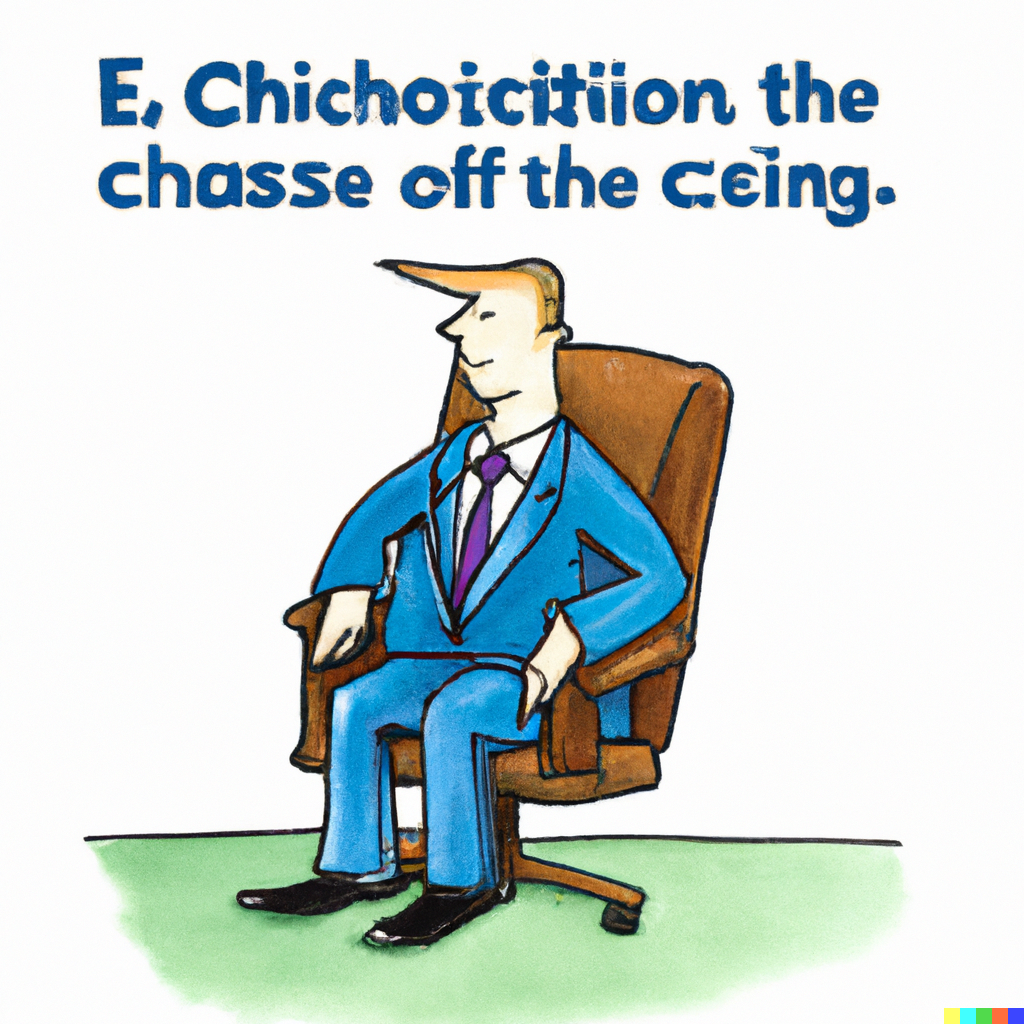
Still, one image should be heading in the right direction. Try expanding on the description:
This meeting takes place in an oilfield with representatives of the company’s board of directors, employees and community members. The CEO is demonstrating an effort to reduce greenhouse gas emissions.
The results to this expanded query still can be unintendedly hilarious. Keep at it.
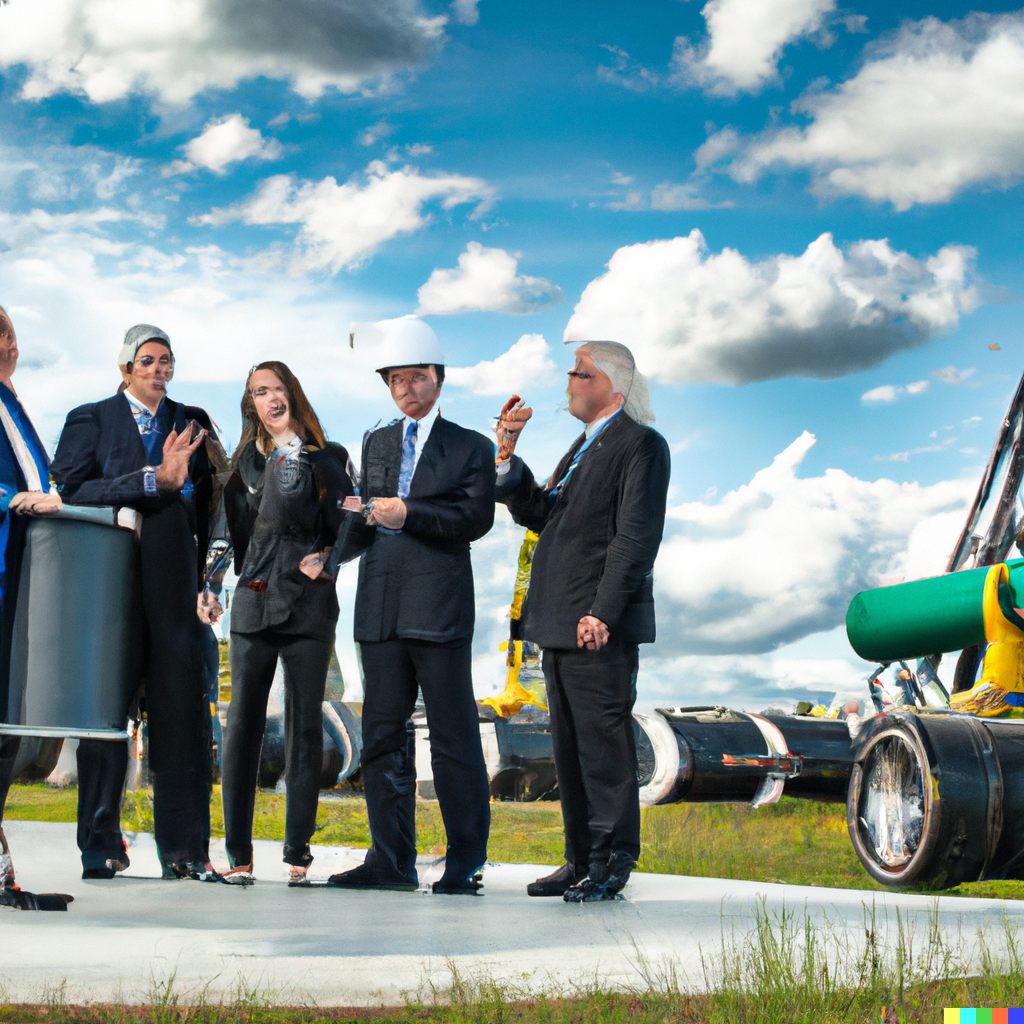
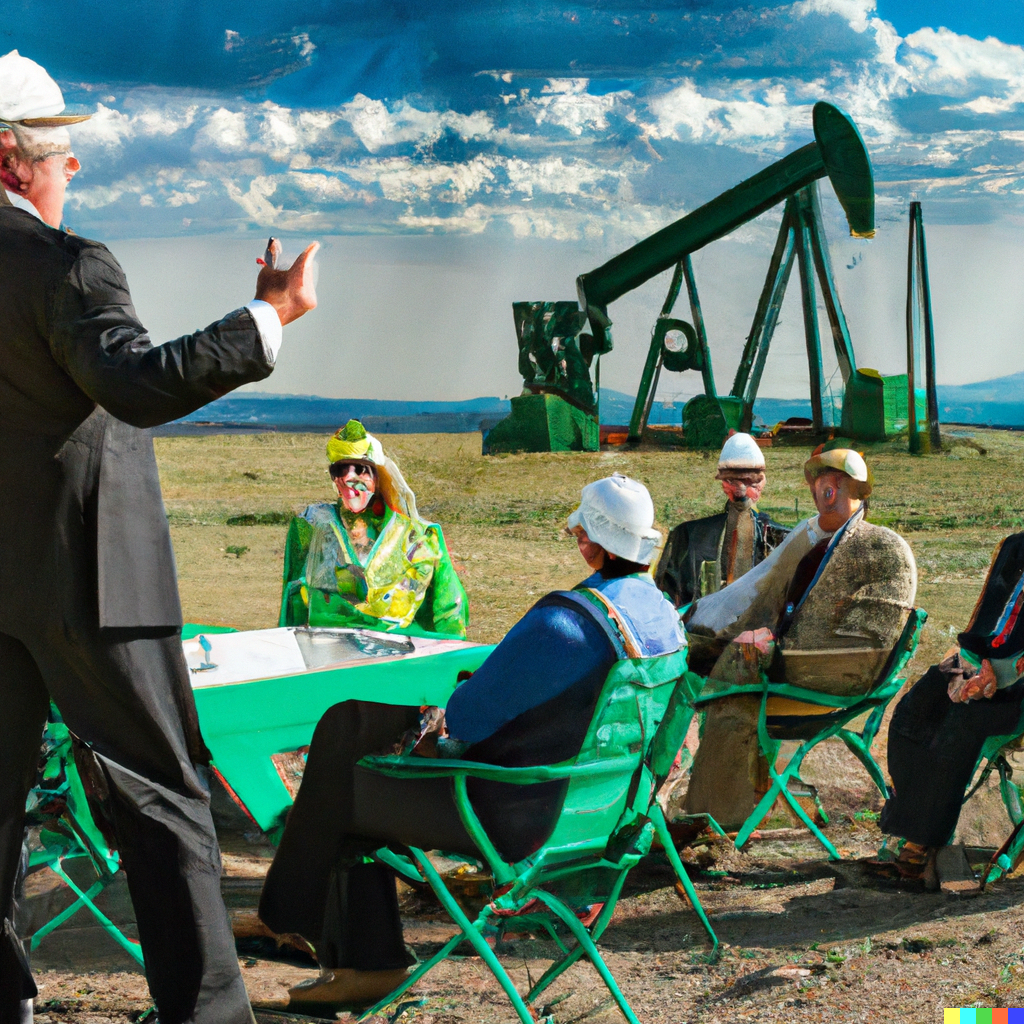

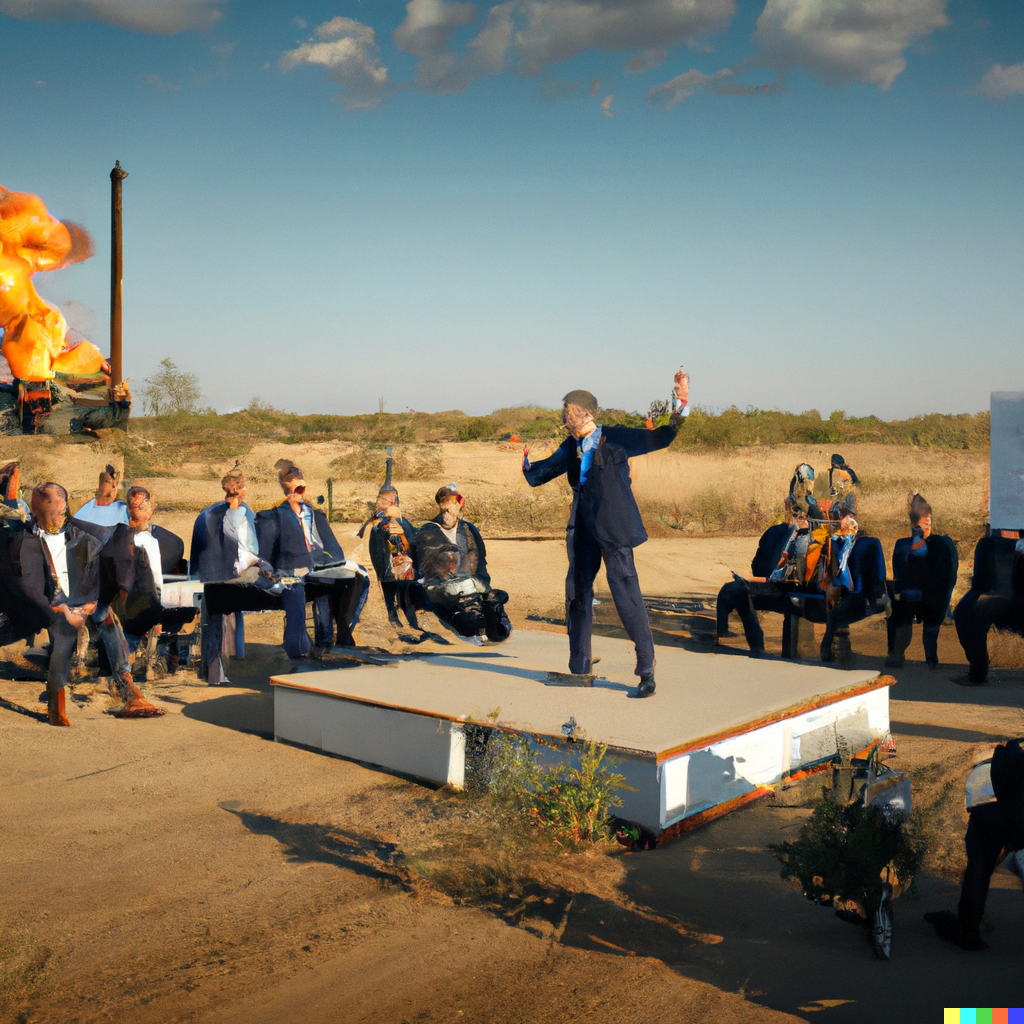
DALL-E and other text-to-image programs need continued prompting. Even more than text, images. rely on a detailed series of prompts. Marketers should consider these cues in AI content creation:
A bigger toolkit can also help. Entering the expanded prompt in Microsoft’s Bing Image Creator and its advanced DALL-E 3 generator create more natural if not quite realistic figures.

More back-and-forth instructions to the chatbot can make the crowd more diverse, declutter the background or experiment further with the future that lies in our CEO’s hands.
None of these sketchy images are ready for publishing—consider it AI brainstorming. Its best use is to lay the groundwork for skilled designers to apply their unique perspectives on real clients in the real world. AI can generate camera angles for a photo shoot or produce a storyboard for video, which will help producers gain client approval, shorten the pre-production timeline and reduce onsite cost.
There are good reasons for PR and marketing pros to add their own value to images developed with AI, even those created with the newest models. The most persuasive reason to be cautious about AI is that bots do not create intellectual property. Clients expect a distinctive and original product. Bots create derivative content but cannot show their work. Copyrighted source material may be used in training their predictive language models, putting its reuse in a legal gray area.
Graphics AI enterprise tools such as Adobe Firefly, trained on stock images, pose no threat of intellectual property theft. Many designers put AI tools to much more modest ends filling in or shading their own work.
In some ways, asking a chatbot for images isn’t that different from assigning graphics to a team member in Slack: The more specific the instructions, the more likely the output will meet or exceed expectations. There are good reasons for PR and marketing pros to add their own value to images developed with AI, even those created with the newest models.
For all their deep-learning training, AI assistants are still interns. They need a lot of coaching, and their work a lot of polishing, to meet a marketing professional’s needs.
As soon as you submit the form, we will send to you a link to download our report.